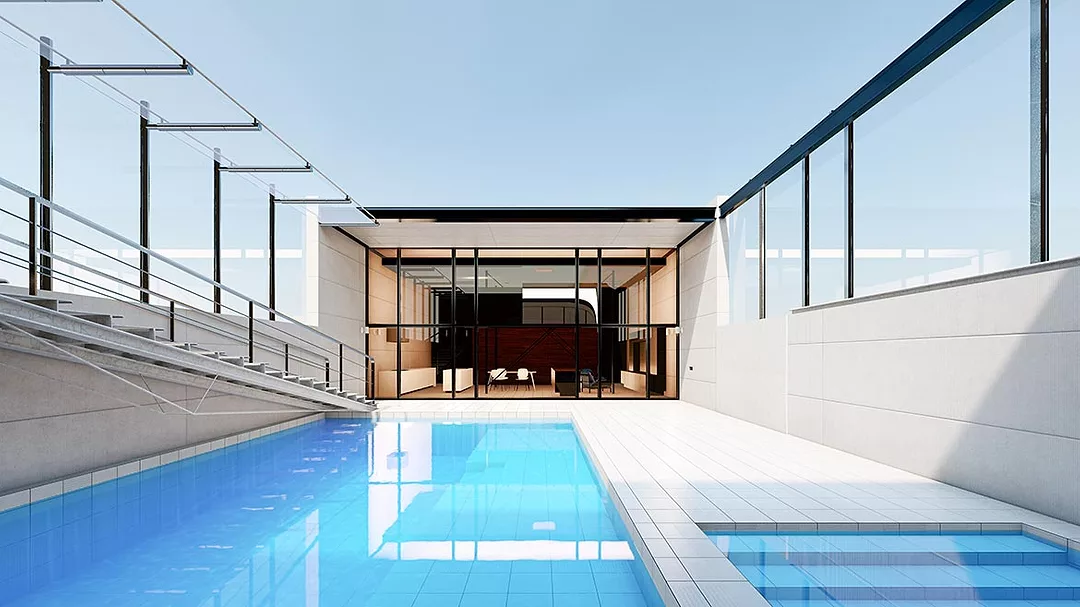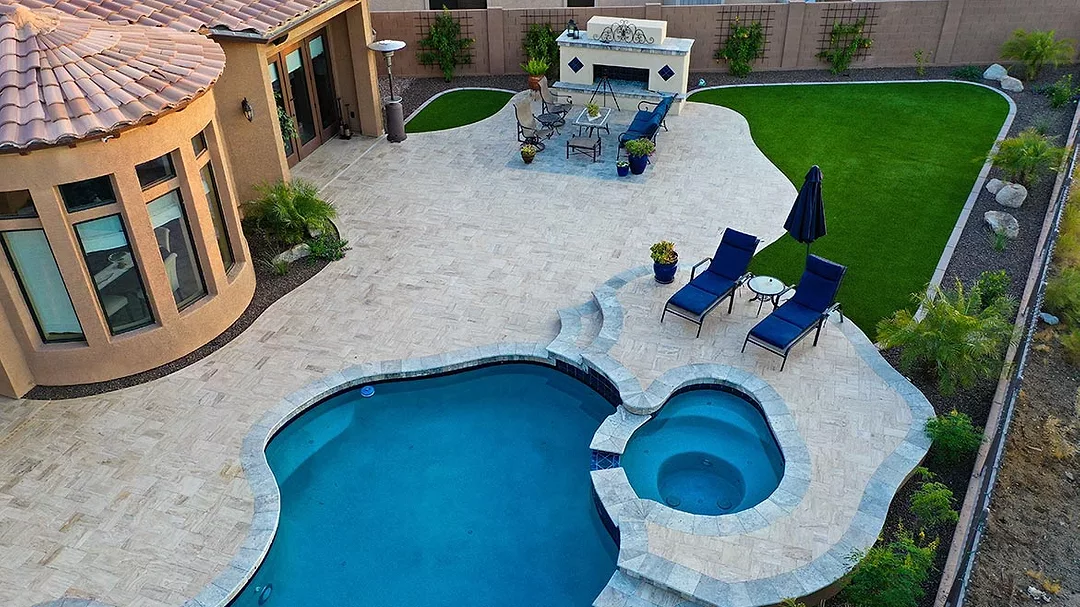The Science of Outdoor Tile Installations

The pandemic has propelled outdoor living space upgrades to the forefront of many homeowners' minds, turning backyards into mini staycation paradises and extending comfort beyond the four walls of a home.
Photo: Digital Genetics/Shutterstock.

Porcelain and stone tiles reign as the favored options for outdoor installations, and thanks to their density and thickness, these tiles help prevent water absorption and can withstand harsh environmental conditions.
Photo: CactusPilot/Shutterstock.
The pandemic has sparked a renaissance in home renovations. In particular, it has propelled outdoor living space upgrades to the forefront of many homeowners' minds, turning backyards into mini staycation paradises and extending comfort beyond the four walls of a home. With this outdoor renovation wave, it’s incumbent on seasoned tile installers to stay ahead of the curve on the latest trends and techniques that can provide clients with exceptional, lasting results.
Installers have had to become environmental scientists to some degree, constantly keeping in mind the conditions impacting tile installations. It’s not just about creating a beautiful space; it’s about making sure the tilework can stand up to Mother Nature. That means paying attention to how the space is used, which direction it faces, the type of foot traffic it gets, water exposure, temperature fluctuations and the infamous freeze/thaw cycles. It’s like putting together a jigsaw puzzle where the pieces are ever-changing environmental conditions.
One trend gaining momentum in the industry is waterproofing. Once deemed a “nice-to-have” feature, waterproofing is now increasingly viewed as an essential element in outdoor tile installations. The reasoning is simple: it significantly extends the lifespan of outdoor installations by protecting the substrate from water damage and offering crack suppression so movement is absorbed and doesn't transfer to the finish. It's not just about slapping on some waterproofing membrane. It’s about using high-quality products that are integrated smartly into the installation process and communicating the importance to the homeowners - a small investment that can protect their beautiful outdoor spaces for years to come.
In the face of these challenges, the industry has stepped up, delivering high-strength ANSI A118.15 adhesive mortars and ANSI A118.7 grouts that offer excellent performance under diverse conditions. Now, installers are not just delivering pretty spaces; they’re delivering pretty tough spaces.
The choice of tiles is another critical aspect, with porcelain and stone tiles reigning as the favored options for outdoor installations. Thanks to their density and thickness, these tiles help prevent water absorption and can withstand harsh environmental conditions. Plus, they deliver on aesthetics too, which is always a win-win.
The right foundation sets the stage for everything that follows. Surface preparation remains key to a successful tile installation. Experienced installers know that the state of the substrate can make or break the finished flooring performance. Whether the substrate is overly wet, cracked, dirty or not flat, it can compromise the end result. This is where materials like polymer-fortified pre-blended materials, like Laticrete 3701 Fortified Mortar Bed, are gaining traction for their exceptional strength and ease of use.
In a related vein, the use of crack isolation membranes is growing in popularity. These modern membranes provide a dual function, often acting as a waterproofing agent while reducing the transmission of cracks through the surface. And for those projects where waterproofing isn’t a top priority, there’s a growing preference for uncoupling mats or membranes. All are a smart way to prevent substrate cracks from becoming a problem down the line.
No discussion on tile installation trends would be complete without mentioning the importance of movement joints. Following the TCNA EJ171 recommendations for these joints in outdoor installations is becoming standard practice. They’re the unsung heroes of many installations, preventing unsightly cracks.
The boom in outdoor renovations presents both a world of opportunities and challenges for tile installers. Keeping pace with these trends allows us to meet and exceed client expectations. As we ride this wave, let's continue to embrace the new and adapt our techniques, ensuring we offer the highest quality installations that stand the test of time.
Looking for a reprint of this article?
From high-res PDFs to custom plaques, order your copy today!



